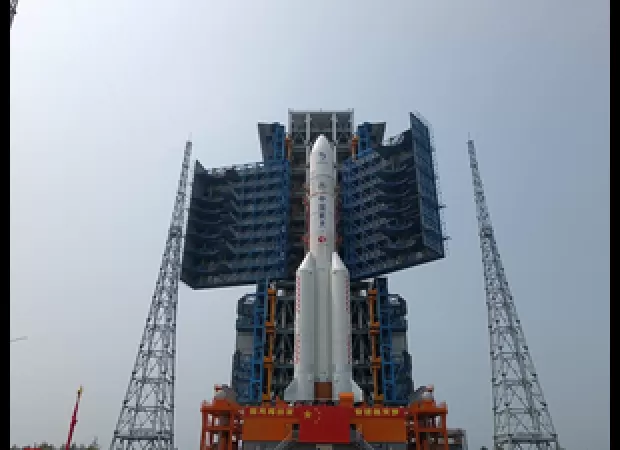China is planning to send a lunar probe, Chang'e-6, to the far side of the Moon on Friday.
China will send its Chang'e-6 probe to the unexplored far side of the Moon, marking the first time a human lunar mission has been attempted.

The excitement is palpable as China prepares to launch its Chang'e-6 lunar probe on a groundbreaking mission to the Moon's enigmatic far side. This marks a significant milestone in the history of human lunar exploration, according to the China National Space Administration (CNSA).
As per the CNSA, the launch of the Chang'e-6 lunar probe is scheduled for Friday afternoon, between 5 and 6 PM. This highly-anticipated mission aims to collect and bring back samples from the Moon's mysterious far side, which has never been done before.
The Long March-5 Y8 rocket, responsible for carrying the Chang'e-6 probe, has already begun the process of filling up with liquid oxygen cryogenic propellant at the Wenchang Space Launch Site in China's southern island province of Hainan. This propellant will serve as the fuel for the carrier rocket, powering it on its journey to the Moon.
The Chang'e-6 spacecraft consists of four parts - an orbiter, a lander, an ascender, and a returner. Each of these components plays a crucial role in the success of the mission. To further enhance its capabilities, the mission will carry four payloads developed through international cooperation. These include scientific instruments from France, Italy, and the European Space Agency aboard the lander, and a small satellite from Pakistan aboard the orbiter.
To commemorate this historic event, the CNSA has invited about 50 guests from 12 countries and international organizations to attend a workshop and witness the launch in Hainan. This is a testament to the global significance of this mission.
The Chang'e-6 mission has chosen the Apollo Basin, a well-known impact crater within the South Pole-Aitken Basin on the far side of the Moon, as its primary target for landing and sampling. Once the spacecraft reaches the Moon, it will make a soft landing, and within 48 hours, a robotic arm will extend to scoop rocks and soil from the lunar surface. At the same time, a drill will bore into the ground, conducting scientific detection work.
After the samples are collected and securely sealed in a container, the ascender will take off from the Moon and dock with the orbiter in lunar orbit. The returner will then carry these precious samples back to Earth, landing in Siziwang Banner in north China's Inner Mongolia Autonomous Region. The entire mission is expected to last about 53 days, as stated by the CNSA.
This ambitious and innovative mission will undoubtedly bring us closer to unraveling the mysteries of the Moon's far side and contribute to our understanding of the universe. We eagerly await the success of the Chang'e-6 lunar probe and the groundbreaking discoveries it will bring back to Earth.
11 Views


